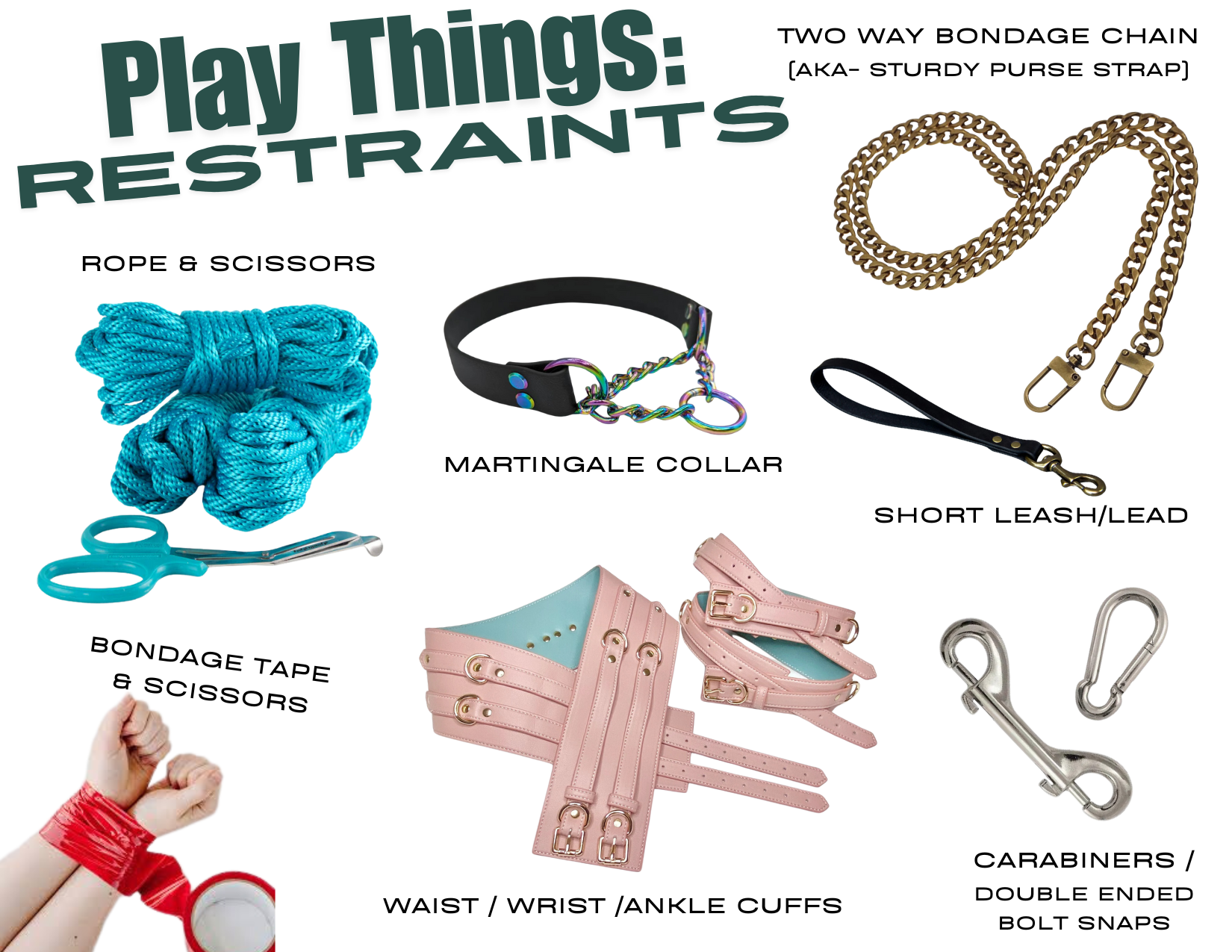Going to a kink event and wondering what to bring?
Good news- I have ADHD with a long time hyper-fixation on kink and a hard on for organization. I got you.
First — you’re gonna need a bag…
I take my backpack purse for daytime events. It fits all my bits and bobs with room for vender finds.
Backpacks, even small ones, can be bulky for evening events. That’s where festival belts and holsters come in handy.
Wrist wallets make getting to cards and cash easy.
🔥Hawt Tip: Go for packs with hooks (or add your own). Now you have a place to hang short handled floggers, paddles, etc. 🔥
So.. What goes in the bag?
You don’t want to get there, giddy and exited, only to end up distracted and cranky because you are uncomfortable, stuck with a wardrobe malfunction or aren’t able to participate in an event.
A prepared player is a popular player.
Here are some helpful breakdowns and notes:
Cash- strip shows/ drag performances? bring $1’s
Clothing Repair Kit- mini fabric glue, shout wipes, safety pins, needle, pins, black and white thread, folding travel scissors, fashion tape, electrical tape, sticky back velcro strips (heavy duty), zip ties, button, snap, hook, super glue, eyelash glue
First Aid Kit- bandages in various sizes, antibiotic ointment packets, individual alcohol wipes, burn gel packet, smelling salts, blister patches, single dose eye drops, hydration booster, emergen-C, hand sanitizer, compressed towels, medication (pain/fever, allergies, gas, diarrhea, nausea, cough suppressant, decongestant…)
Matches? Here’s why.
Ok- so we have the fundamentals. But-
How do we choose which play things to bring?
🥵 Before we get into all of the options- let’s center. 😌
We want to have fun but we don’t want to spend the entire event lugging a bunch of stuff around or going back and forth from our rooms to the event space. Here are some guidelines I use when packing:
First time to any event? To this particular event? Know this: No one is expecting anything from you other than respect. Relax. People watch. Get a feel for it and enjoy the hell out of people watching. The exhibitionists will thank you for it.
Plan your play. Know what you want to do. Impact scene? Bondage? Less is more, I promise. We don’t need a bunch of stuff to improvise.
Setting up a scene with someone new? Stick to just one. Maybe 2 if you aren’t going with a partner and the event is a multi day event.
USE A SCENE PLANNER! One that all parties fill out! Here’s mine.
Don’t plan a scene the day that you arrive if you are going to a multi-day event.
Excited to make new friends? Try new things? Yes! And you can. But- are you there with a partner(s)? Friends? Prioritize playing and spending time with your people.
Pack no more than 2 outfits per day. Shoot for layered outfit changes. Rather than 2 different outfits have your daytime look shift into your nighttime look by removing a thing or two, adding an accessory or two. Bonus points if you can fit it all in your bag.
Small. One time use. Disposables. Awful normally. In this case- very much your friend.
You. Need. Substantive. Food.
Ok, Ok- Now to the play things. Let’s start here:
Remember- keep it simple. We are not packing all of these things- we are packing the things that go with our play plan.
Rope: Most events have Shibari classes. To practice along 2x (15ft) lengths and 1x (30ft) should do you.
🔥Have a scene that requires a bit of rope? Don’t carry it. Use some decorative bondage to wear it to the event. Taking a partner who would be into it? Decorate them. Rope corsets/gauntlets are great🔥
DON’T forget your safety scissors!
Bondage Tape: this stuff is great. It’s a PVC strip that sticks to itself but not anything else. The rolls can be bulky- cut a cardboard toilet paper roll down and wrap it around that.
Martingale Collar: This is great for creating a sense of control/being controlled without packing a bunch of cuffs. Attach a short lead to it and give it a tug when you want to remind your partner who’s in control (if that is part of your play)
Cuffs: Every dungeon has spanking benches and at least one St. Andrews Cross. If you want to be anchored/anchor a partner to said structure, bring wrist and ankle cuffs. Don’t forget your carabiners / double ended bolt snaps.
Leashes: Leashes can be tricky in an event space. They can disrupt traffic and holding them can get tiresome. Consider a shorter, double ended leash. Have the leashed person wear a waist cuff and the leash ‘holder’ wear a waist chain or a harness with a ring on the back. Connect those two and now everyone has free use of their hands.
🔥A sturdy purse strap chain sourced from a Goodwill find is perfect for this. The hooks have the ability to swivel and the chain is durable without being heavy or bulky 🔥





